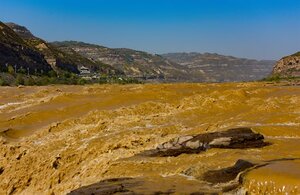By Amber Rose, Grainger College of Engineering
University of Illinois researchers Leonardo Chamorro and Jim Best used clear mud in order to study the structure of turbulence in water flows. You might be thinking, "mud isn’t clear!" If so, you would be wrong.
Most work done by researchers in the Earth surface community has looked at the dynamics of water flows in the absence of suspended sediments -- essentially clear water flows. However, natural water flows, including rivers, estuaries, and oceans, contain very fine suspended particles (clays). Turbulence in these environmental flows is affected by clay concentration, and understanding how their dynamics change can be applied to understanding how these processes affect natural and industrial environments.
In a recent paper published in Physical Review Fluids, the team wanted to use modern fluid mechanical tools (including laser light) to characterize turbulence in muddy flows, rather than traditional acoustic techniques, which are often limited to being only one- or two- dimensional.
The Problem: Mud is opaque. The Solution: Make mud clear.
Laponite is a synthetic clay used to produce paints, inks, and household cleaning materials. When mixed in water, the unique synthetic clay behaves in a similar way to natural clays. Laponite produces a clear or semi-clear suspension that is essentially a clear mud that “we can then shine laser light into and we can use different techniques to look at the dynamics," explained Best, professor in the departments of Geology and Geography & GIS.
The researchers aimed to understand the role of clay concentration on flow dynamics. To accomplish this goal, they performed a simplified experiment that used an idealized box to look at fluid mixing and quantify how increased clay concentrations changed the dynamics of the flow.
Continue reading via Mechanical Science & Engineering

